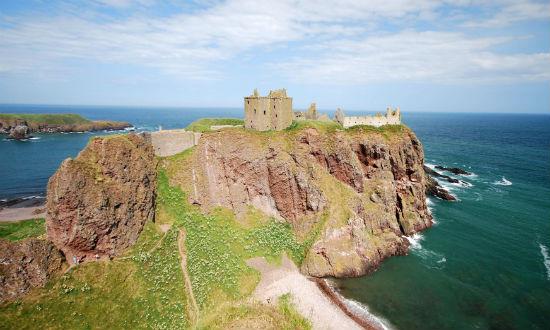Scotland: Customs and
Tradition.
Scotland
is distinguished for many ancient traditions and customs about thousand years
that have persist for centuries in this modern society, particularly in the
Scottish life. Some typical customs are about the lucky, fertility, land and
eternal cheerfulness. Although many
remain common customs today, here are little pieces of wonderful traditions,
some that haven’t been remembered, and other ones that remain popular in many
territories across this beautiful country today.

You
can find others popular custom in Scotland, which is carried out even today,
this custom is called “Blackening”. The couple are kidnapped by own friends one
night before the celebration about wedding and then plumes and smoke cover in
around the village like ceremony.
This was
a specially tradition in Scotland, it was the “Creeling of the Bridegroom”, in
this Scottish celebration, the people puts into a big basket some stones and
tied to the grooms back. The husband was forced to move the big basket with
stones around the complete town and wasn’t until his bride agreed to kiss him
when their friends would allow the “Creeling” to the end.
Recently
this celebration wasn’t celebrated in the Scottish nation. This celebration is
called Christmas because it was against the culture tradition of Scotland; I
mean the religion of this country.
Scottish
calendar has an important celebration; it is called Hogmanay, this custom
refers to the “new year’s eve” when people in Scotland prefer this celebration
before to celebrate the Christmas. The origins of this celebration is not clear
and specially the name of this custom, some people say it is the celebration of
winter solstice among the Nords and another say it is part of a celebration
from Gaelic people. Before to celebrate it, you need prepare some things like
cleaning the house (the night before to 1st January), Getting rid of
debt, Torch and Bonfire Ceremonies, etc.
For
Scottish life, the food is really important in many Ceremonial Occasions for
example: Christmas, New Year and wedding, all of these traditions are
represented with one symbol, it is the whiskey.
On
30th November in Scotland women celebrates St. Andrew's Day, where a young
woman pray to St. Andrew for a husband and then make a wish and look for a sign
that they thirst and prayers were heard. One of the most important traditions
of this celebration is the sign of peeling an entire apple without breaking the
peel.
The
customs and tradition form an important function in their lives, for example
every Scottish thinks about many celebration and they prepared previously the
celebrates day. People are very careful with all things about these since when
Scotland rose as nation to now.
References:
Tourism web site, consulted (October 17th),
Available in: http://www.scotlands-enchanting-kingdom.com/scottish-customs-and-traditions.html
Tourism web site, consulted (October 17th),
Available in: http://www.scotland.org/about-scotland/scottish-culture-and-traditions
Tourism web site, consulted (October 19th),
Available in: http://www.everyculture.com/Sa-Th/Scotland.html
Tourism web site, consulted (October 19th),
Available in: http://freewebs.com/clanswoman/birth.html








